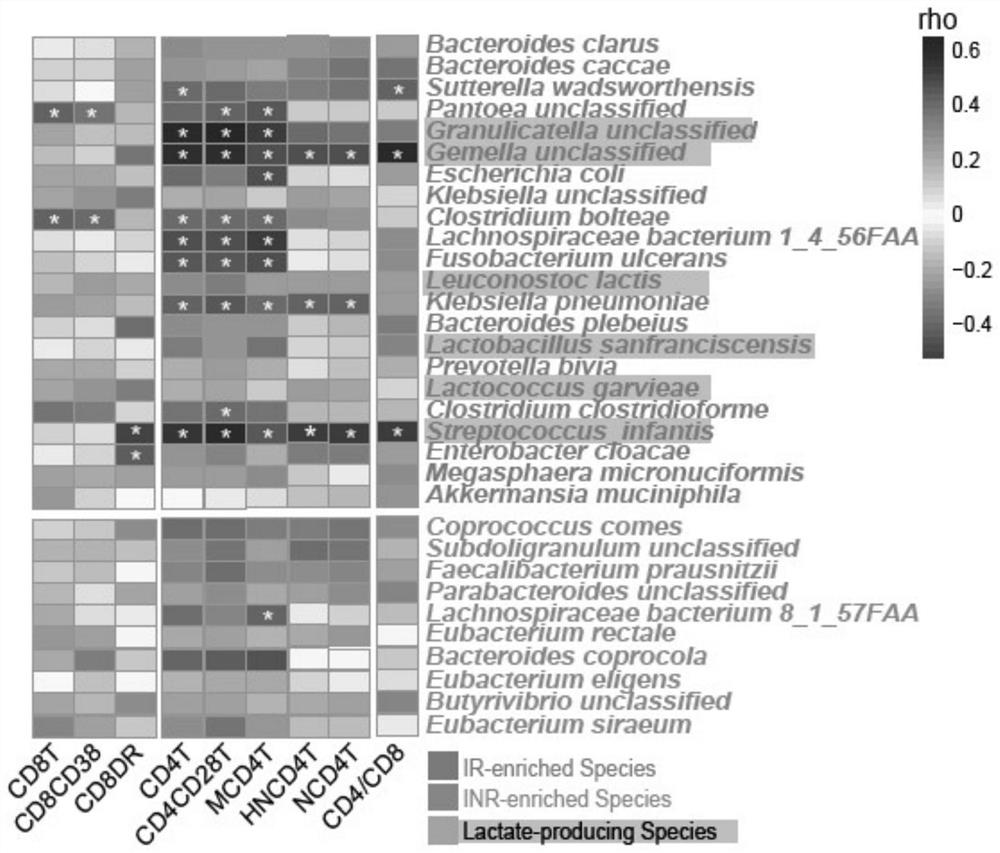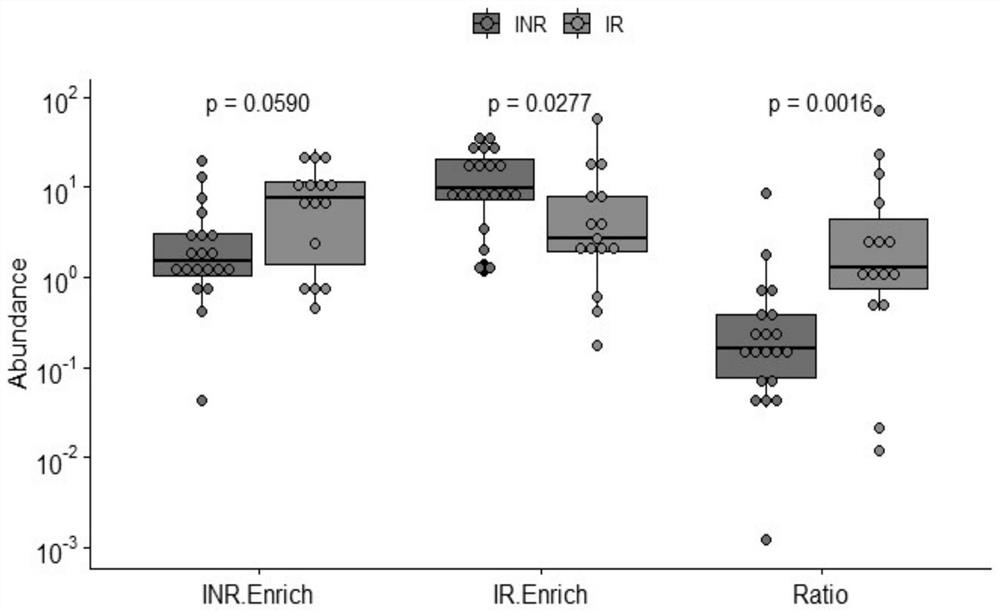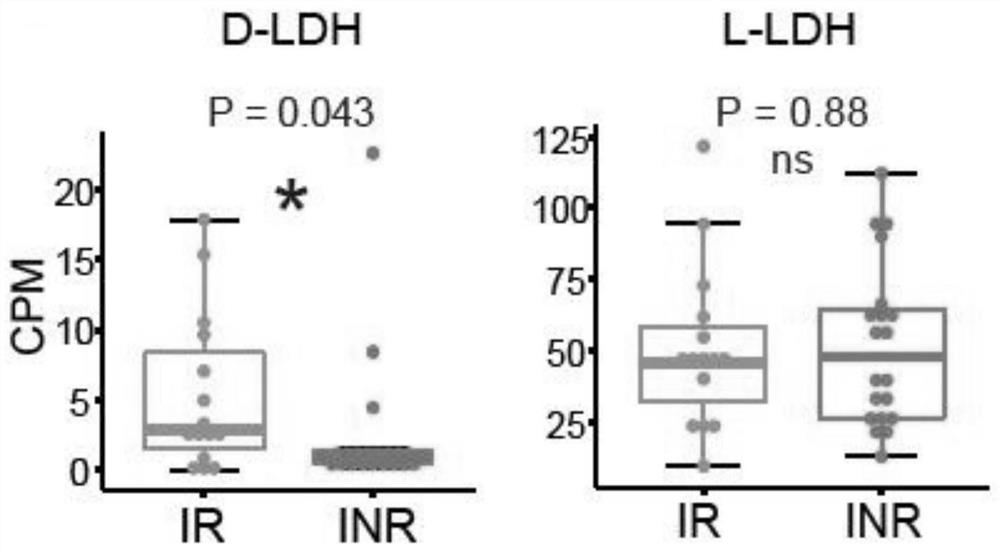Intestinal flora related to immune recovery and application thereof
A technology of intestinal flora and intestinal tract, which is applied in the field of microbiology and medical molecular biology, can solve the problems that the recovery process of immunocompromised patients is not clear and affects HIV patients, so as to improve the level of immune recovery, and the detection is convenient and fast , The effect of convenient sample collection
- Summary
- Abstract
- Description
- Claims
- Application Information
AI Technical Summary
Problems solved by technology
Method used
Image
Examples
Embodiment 1
[0073] The following examples are used to illustrate the present invention, but are not intended to limit the scope of the present invention. Unless otherwise specified, the examples are all in accordance with conventional experimental conditions, such as Sambrook et al. Molecular Cloning Experiment Manual (Sambrook J & Russell DW, Molecular Cloning: a Laboratory Manual, 2001), or in accordance with the conditions suggested by the manufacturer's instructions. Example 1 After ART treatment, the intestinal flora of patients with immune recovery is enriched with more lactic acid bacteria compared with patients with poor recovery
[0074] After 2 years of ART treatment, patients with immune recovery (IR) and patients with poor immune recovery (INR) were studied. Among them, IR and INR mean that after 2 years of ART treatment, the HIV virus is completely suppressed, and the CD4+ T cell count is greater than 350 / mm 3 and less than 350 / mm 3 of HIV patients.
[0075] Metagenomic da...
Embodiment 2
[0081] Example 2 The lactic acid production and metabolism of patients with immune recovery is significantly higher than that of patients with poor recovery
[0082] Using metagenomic sequencing data to quantitatively evaluate the abundance of key enzymes in the lactic acid production pathway of each patient's intestinal flora, the potential of lactic acid production in the intestinal flora of IR and INR patients in Example 1 was analyzed. Lactate dehydrogenase (LDH) is the key enzyme in the conversion of pyruvate to lactate during anaerobic glycolysis, and all lactate is produced from LDH. LDH has two forms L-LDH and D-LDH which produce L-lactic acid and D-lactic acid respectively. By annotating the abundance of each metabolic pathway and enzyme in the metagenomic data, such as Figure 2a As shown, the abundance (EC1.1.1.28) of D-LDH in the IR group was significantly higher than that in the INR group, with the abundance value >3.5×10 -6 As the threshold, IR and INR patients...
Embodiment 3
[0083] Example 3 Compared with patients with poor immune recovery, lactic acid bacteria functional groups are more enriched in the intestinal tract of patients with immune recovery
[0084] Interacting species in the microbiota are often organized into functional groups and perform metabolic functions as a whole. Using metagenomic sequencing data, the intestinal flora of IR and INR patients in Example 1 was analyzed. Such as Figure 3a As shown in , by evaluating the abundance associations between all species that appeared, a total of 9 species groups that were strictly correlated in abundance (rho>0.8) were found. Of these, the two largest species groups (clusters I and II) both contained large numbers of lactic acid bacteria: cluster I had 13 species, of which 9 were lactic acid bacteria, and cluster II had 5 species, of which 4 were lactic acid bacteria. These lactic acid bacteria are mainly from the genera Streptococcus, Gemella and Granulicatella, and were identified as...
PUM
 Login to View More
Login to View More Abstract
Description
Claims
Application Information
 Login to View More
Login to View More - R&D
- Intellectual Property
- Life Sciences
- Materials
- Tech Scout
- Unparalleled Data Quality
- Higher Quality Content
- 60% Fewer Hallucinations
Browse by: Latest US Patents, China's latest patents, Technical Efficacy Thesaurus, Application Domain, Technology Topic, Popular Technical Reports.
© 2025 PatSnap. All rights reserved.Legal|Privacy policy|Modern Slavery Act Transparency Statement|Sitemap|About US| Contact US: help@patsnap.com



